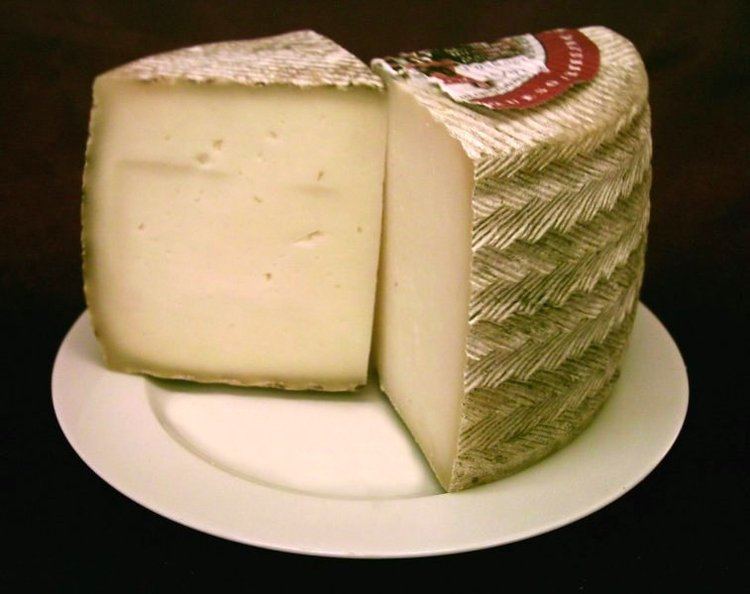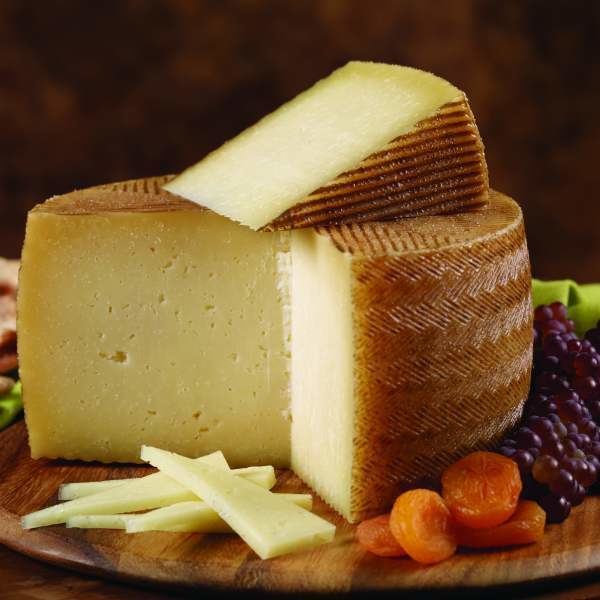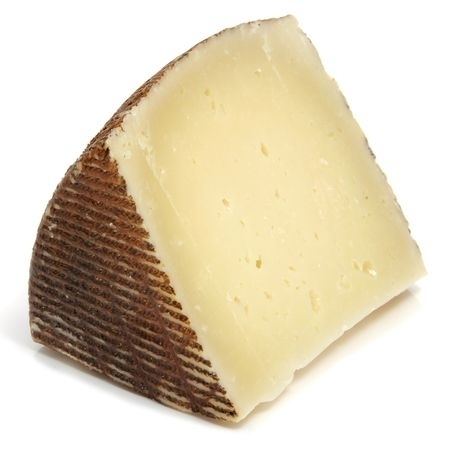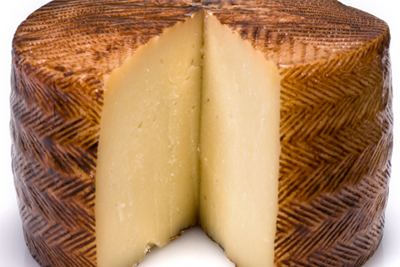Other names None Texture Firm and compact Protein content 4.5% min Source of milk Sheep | Fat content 6.5% min | |
 | ||
Dimensions max height 12 cmmax diameter 22 cm | ||
Olmeda origenes how is it made the manchego cheese
Manchego (officially Spanish: queso manchego, [ˈkeso maɲˈtʃeɣo]) is a cheese made in the La Mancha region of Spain from the milk of sheep of the manchega breed. Official manchego cheese is to be aged for between 60 days and two years.
Contents
- Olmeda origenes how is it made the manchego cheese
- How to make manchego cheese
- PDO requirements
- Manufacture and labeling
- Varieties
- North America
- Central America
- References

Manchego has a firm and compact consistency and a buttery texture, and often contains small, unevenly distributed air pockets. The colour of the cheese varies from white to ivory-yellow, and the inedible rind from yellow to brownish-beige. The cheese has a distinctive flavour, well-developed but not too strong, creamy with a slight piquancy, and leaves an aftertaste that is characteristic of sheep’s milk.

The designation queso manchego is protected under Spain's Denominación de Origen (DO) regulatory classification system, and the cheese has been granted Protected Designation of Origin (PDO) status by the European Union.

How to make manchego cheese
PDO requirements
To be designated as queso manchego, the cheese must satisfy the following requirements:


Manchego cheese can be made from pasteurised or raw milk; if the latter, it may be labelled as artesano (artisan). The only permitted additives are natural rennet or another approved coagulating enzyme, and sodium chloride (salt).
Manufacture and labeling

The moulds in which the cheese is pressed are barrel-shaped. Traditionally, manchego cheese was made by pressing the curd in plaited esparto grass baskets, which left a distinctive zig-zag pattern (known as pleita) on the rind. Today the same effect is achieved by the mould, the inside of which has a design in relief that imparts to the finished cheese an embossed pattern similar to that of woven esparto grass. The top and bottom surfaces of the cheese are impressed with a design of an ear of wheat.
During the maturation process, manchego cheese develops a natural rind. The regulations permit this to be washed, coated in paraffin, dipped in olive oil, or treated with certain approved transparent substances, but require that it must not be removed if the cheese is to be marketed as PDO.
Cheeses that meet the DO requirements carry a casein tab that is applied when the cheese is in the mould and bear a distinctive label that is issued by the Manchego Cheese Denomination of Origin Regulating Council; this carries the legend queso manchego, a serial number, and artwork depicting Don Quixote de La Mancha.
A cheese that is similar to manchego and made in the same region, but from a blend of cow's, goat's, and ewe's milk, is sold as queso ibérico or ibérico cheese.
Varieties
Manchego has variety of different flavours depending on its age. There are four versions of maturity sold:
North America
In Mexico and Spanish-speaking areas of the United States, manchego or queso tipo manchego (manchego-type cheese) is the name given to a cow's milk cheese similar in taste to Monterey Jack. It melts well and is often used in quesadillas. Apart from the name, this cheese has little in common with the Spanish variety.
Central America
In Costa Rica, three companies (Dos Pinos, Los Alpes and Monteverde) produce a manchego-type cheese (queso tipo manchego) which can come with a drawing of Don Quijote on the labels. One company also makes a manchego-type cheese with basil added. These Costa-Rican cheeses can come dipped in paraffin, and some have the pleita pattern pressed on the side.
